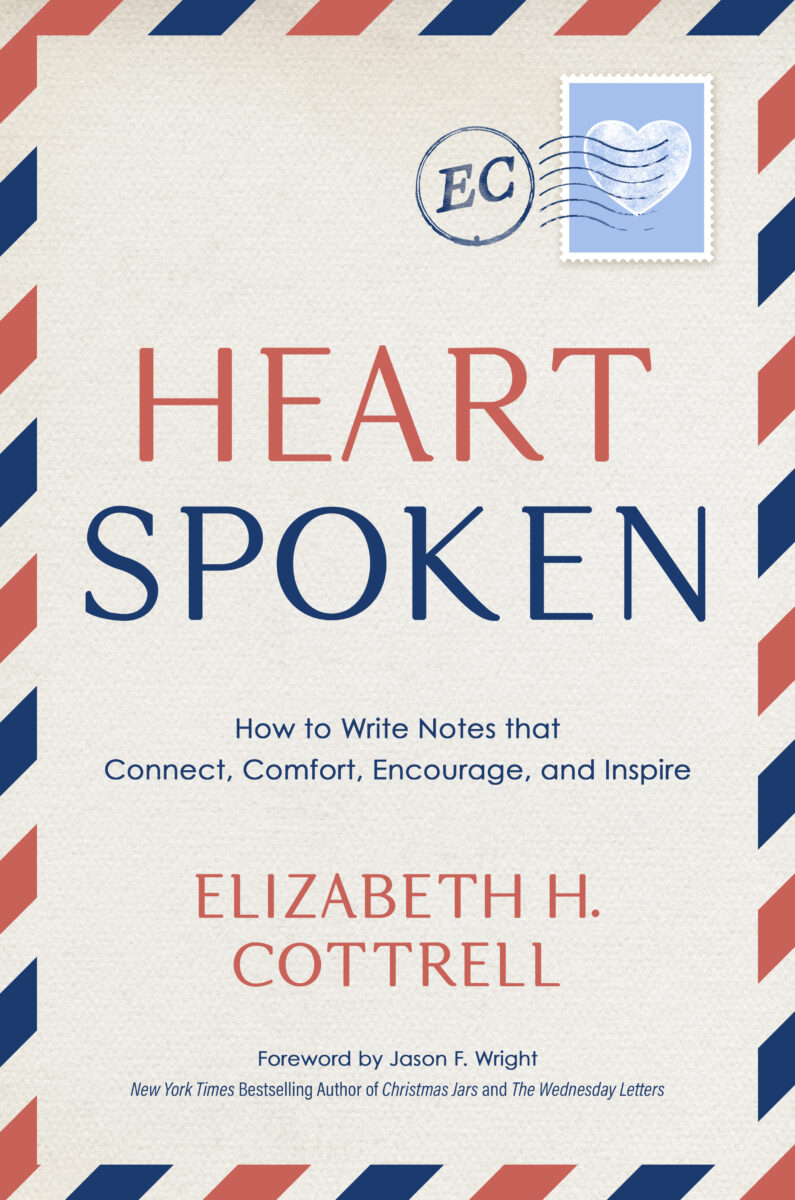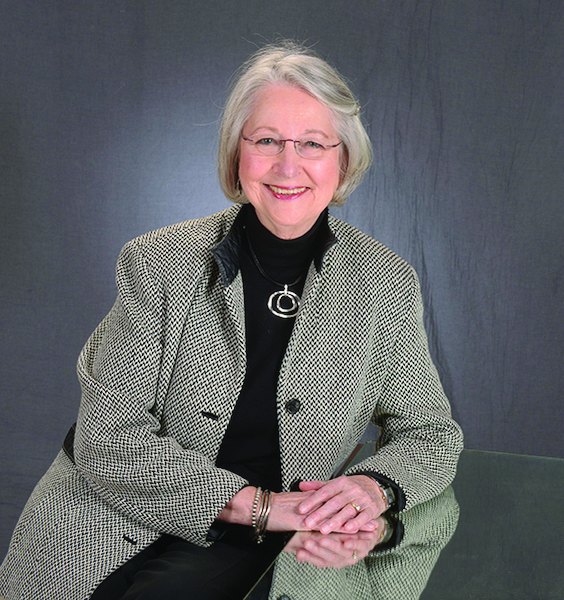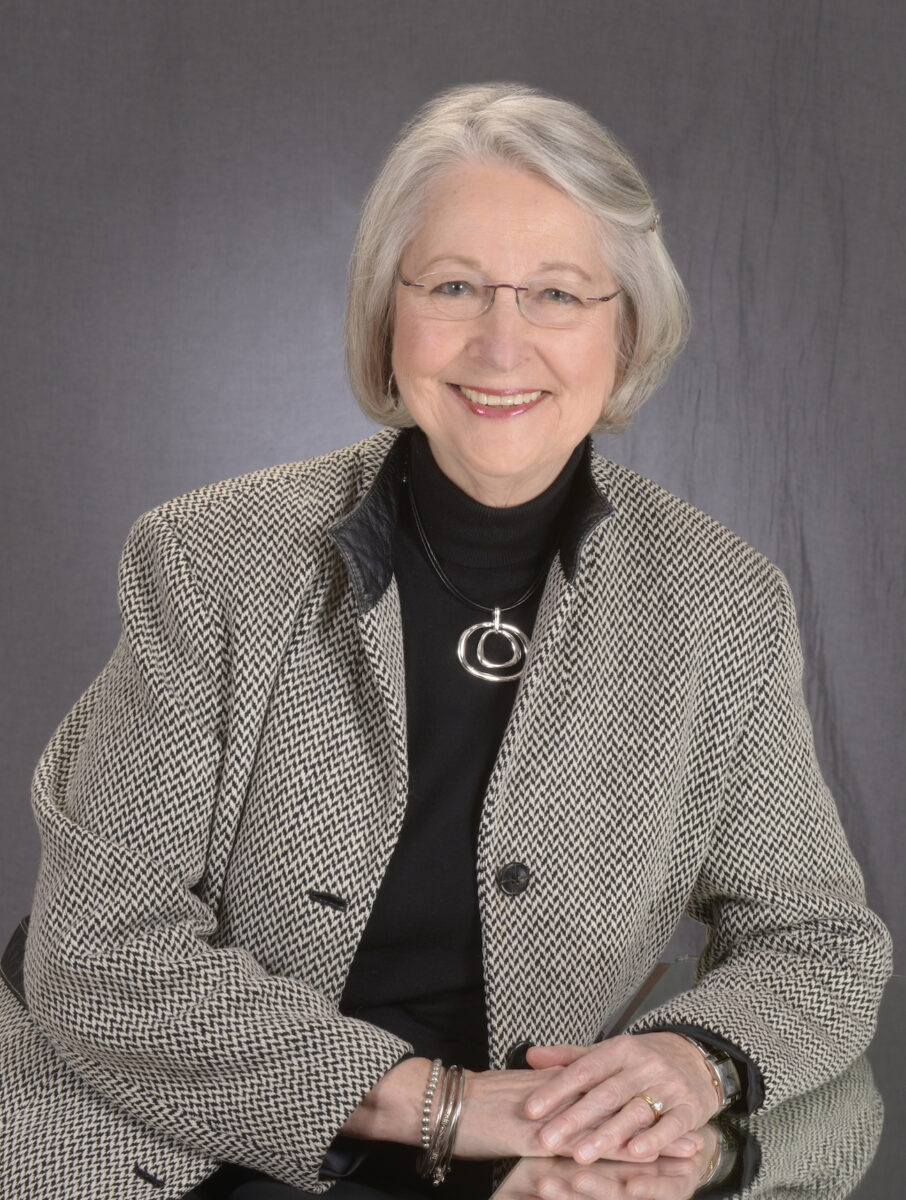Elizabeth’s circuitous career has taken her from published leprosy researcher to stay-at-home mother, to community activist and leader serving on nonprofit and corporate boards, to ham radio operator, to freelance writer/editor and blogger at Heartspoken.com. Above all, she is a connector and encourager whose expertise and passion for note writing is coming at just the right time to a world made keenly aware by pandemic that we humans are hardwired for connection. What better way to connect when we’re forced to stay apart physically? Elizabeth is the right person at the right time to help readers find their own heartspoken voice and learn to harness this powerful tool for nurturing their most precious relationships.

In the hands of author Elizabeth H. Cottrell, the handwritten note is set free from old-fashioned irrelevance to become a superpower tool for connecting with others. Heartspoken: How to Write Notes that Connect, Comfort, Encourage, and Inspire will guide you to uncovering your own unique note-writing voice and give you the confidence to use it. Consider the flipping of a light switch. You can’t see the electricity. You may not even understand how it works. But when power starts flowing through the open wire, it is nothing short of miraculous. She will show you how to find and flip that switch in your own note writing. Grasp this beautiful process, and your writing will become alive, meaningful, and impactful in ways you never thought possible.
1. Your new book, Heartspoken: How to Write Notes that Connect, Comfort, Encourage, and Inspire, came out this July. What inspired you to write it?
I tell these stories in my book, but there were two big moments of inspiration that turned a lifetime of writing notes into a book. The first, and most dramatic, was receiving a note from a woman—a stranger—whose son had committed suicide. I knew his fiancée and I wrote to her after I heard the sad news. She shared my note with her boyfriend’s mother, and here’s what that mother wrote me:
“I truly appreciated the encouraging letter you sent my son’s fiancée after my son took his own life. She shared it with me, and it came during one of the most difficult and testing times of my life. I know I have read your note over 25 times; it was a lifeline which kept my spirits up.”
To this day, I have no idea what I wrote, but I know it came from my heart and carried a genuine desire to comfort her. That moment changed my appreciation for the potential of personal notes forever; from that day on, I saw them as a force for good in the world.
The second moment of inspiration came at the beginning of the COVID pandemic when my daughter, Sarah, knowing that my calendar had just gone from completely full to completely empty, challenged me to get the book out of my head and onto paper. She actually gifted me with an accountability coach to help get me started and keep me on track. It was a precious gift of love that resulted in this book.
I wanted, more than anything, to write a book that would be both inspirational and informative: filled with examples and stories for a fun read but also rich with resources for reference later.
2. All writers approach their stories differently. What’s your process?
Since I write nonfiction instead of fiction, this book was more a sharing of other people’s stories rather than the telling of my own. In that sense, I approach my writing as a curator of gems I want to share. I derive my inspiration from conversations, books, podcasts, nature, and inspiration. I capture ideas in a notebook or using an “Idea Board” on Trello, and that’s where I go to grab the ideas I want to flesh out for a blog post, article, or book.
3. Where and when do you feel most inspired?
Two places bring me joy, peace, and inspiration: 1) In the early morning quiet, I love sitting in the sunroom of our Shenandoah Valley home where I can look out and see the Massanutten Mountain range and an endless variety of wildlife. And 2) On a shady deck overlooking a quiet mountain stream or lake.
4. How did you come up with the title of your book?
The title came directly from the name of my blog, Heartspoken.com, where I write about life’s four essential connections: with God, with self, with others, and with nature. The book is about writing words from the heart, and it presents note writing as a natural, heartspoken tool for connecting with others.
5. Who are some of your favorite writers or creators?
Annie Dillard, Wendell Berry, Geraldine Brooks, Brenée Brown, Rachel Held Evans, Louise Penney, Maggie O’Farrell, and Ann Patchett.
6. How long have you been writing? When did you start?
I have been doing technical and business writing for much of my professional life—for decades. I never considered myself a writer until I started blogging in the spring of 2010, when I was easing out of full-time work and wanting to help others learn to strengthen their life’s essential connections. The idea of writing a book evolved slowly in the years after that.
7. What, to you, are the most important elements of good writing?
Writing that I love to read—whether fiction or nonfiction—is immersive: intimate, spare, vivid, and pulls in as many of the five senses as possible or appropriate. I appreciate writing that is well edited, clear, and lush.
8. What part of the book was the most fun to write?
I loved writing and developing my secret NOTES formula: an easy-to-remember acronym to help note writers get in touch with their most heartspoken words.


